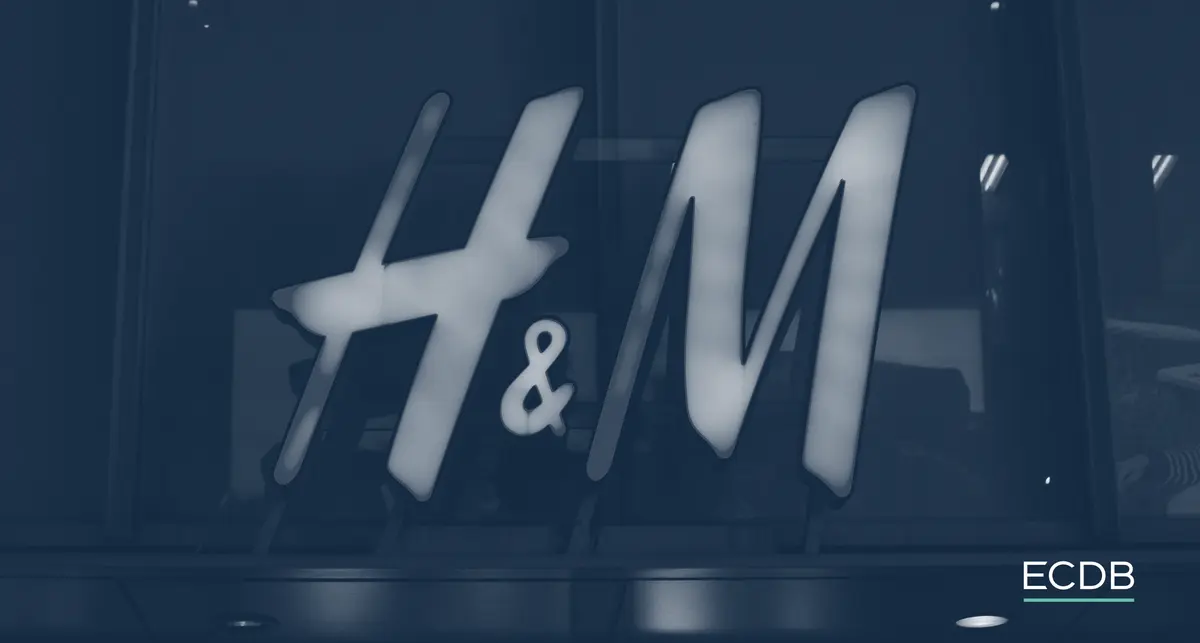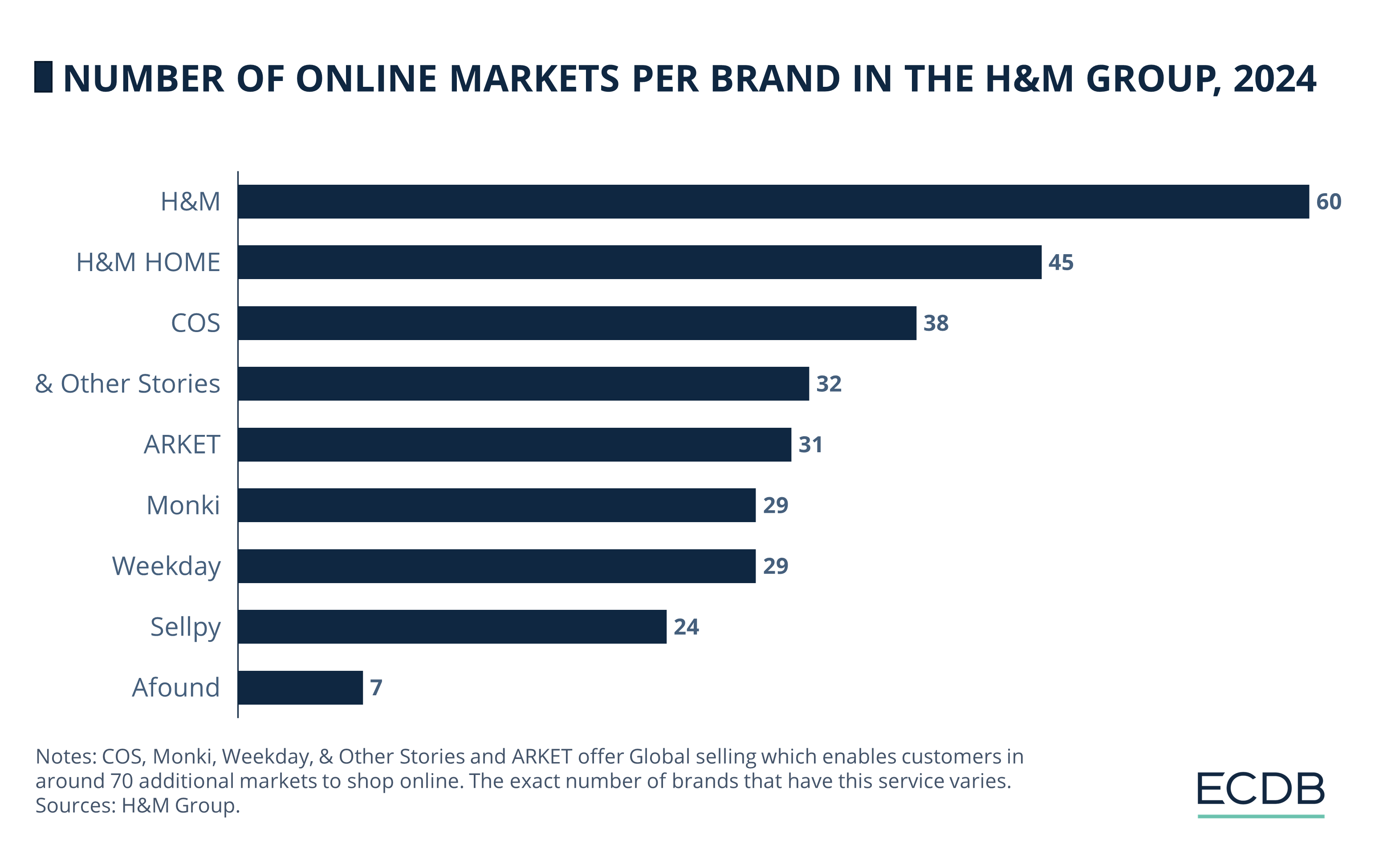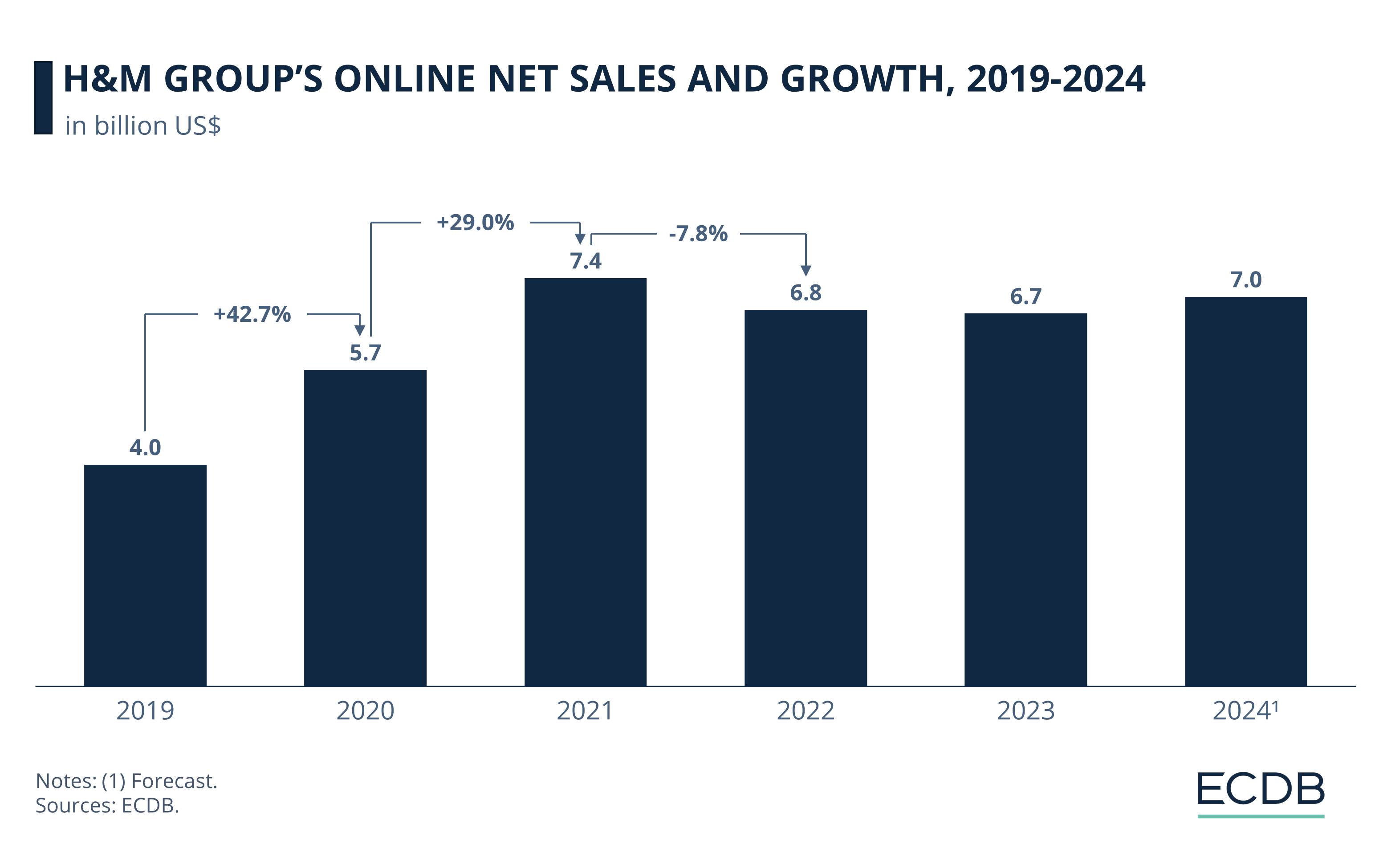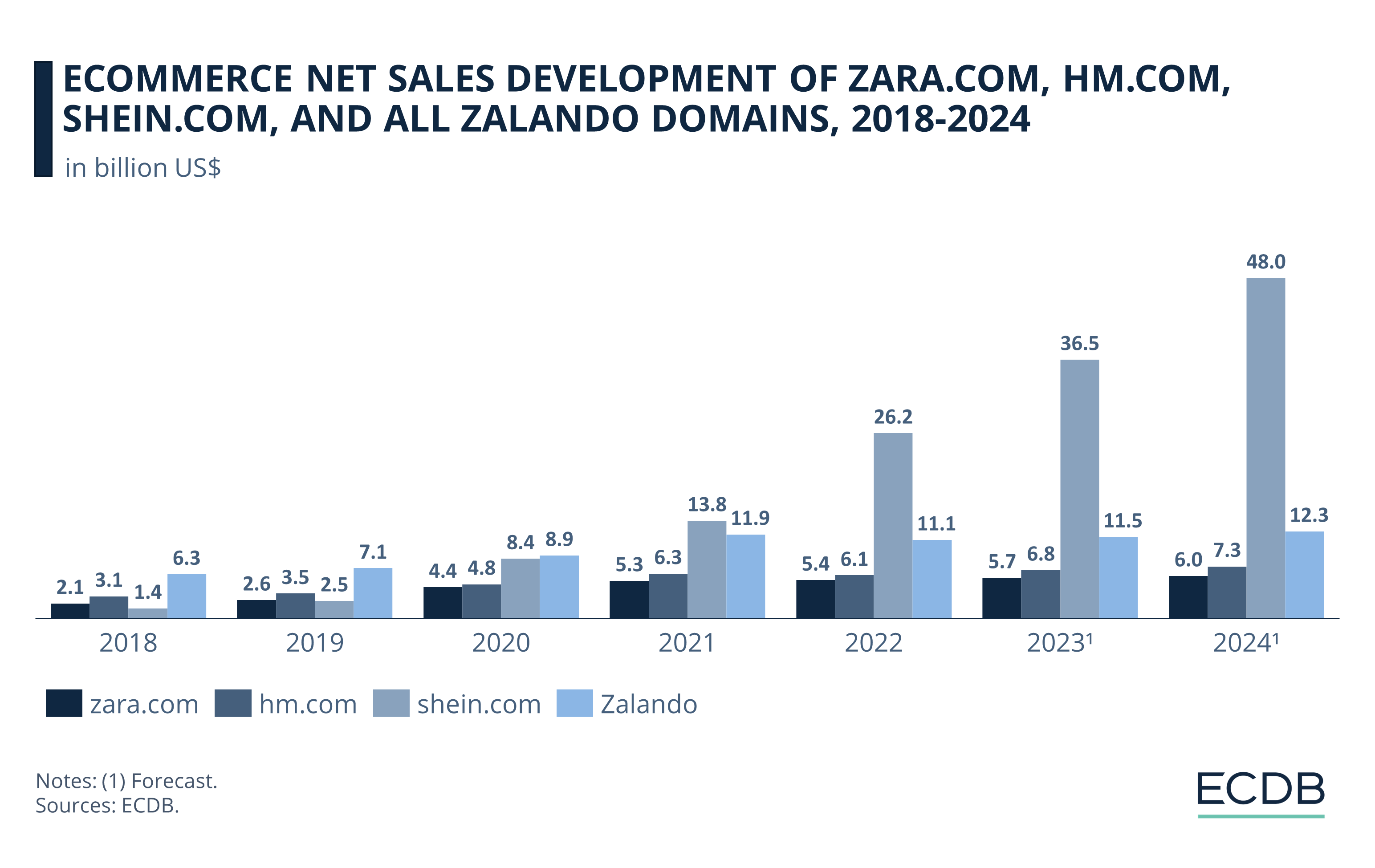eCommerce: Fashion Key Players
H&M Group 2024: Online Net Sales Growth
Changing market conditions force the H&M Group to act. Here is a look at the conglomerate's online sales performance and how its strategic changes are expected to affect H&M Group's bottom line.
Article by Nadine Koutsou-Wehling | May 10, 2024Download
Coming soon
Share

H&M Group in 2024: Key Insights
Higher Quality Brands: Online markets are widely available for most brands in the H&M Group's portfolio, but penetration varies. Naturally, H&M is the most prevalent, while sustainability-focused brand Afound is relatively new and the least prevalent.
Ecological Initiatives: With the acquisition of Sellpy and Afound, H&M Group is addressing sustainability concerns. Sellpy is a secondhand marketplace and Afound sells surplus items from first- and third-party affiliates.
Online Fashion Market: New fashion retailers with a faster online strategy are putting pressure on incumbents H&M, Zalando, and Zara to act. Can H&M Group hope to keep up?
Global fashion eCommerce is undergoing changes as new technology opens up possibilities for every step of the supply chain.
Fashion retailers like Shein use these innovations to change the face of the industry: Low prices for an endless supply of new products.
How do incumbent fashion brands react to this new development? The H&M Group is taking steps.
The H&M Group Comprises Nine Brands
H&M operates in 77 markets around the world, 60 of which have an online presence. In addition, the H&M Group includes several fashion brands, each with their own unique style. These additional brands include COS, Monki, Weekday, & Other Stories, ARKET, Afound, H&M HOME, and Sellpy.
The number of markets where each of these brands sells online is shown below.

H&M itself is present in 60 online markets, the highest number of all subsidiaries. This is followed by H&M Home with 45 markets (2023:42). COS, a brand that offers more minimalist styles at higher prices, sells online in 38 markets, while & Other Stories operates in 32. ARKET follows closely with 31 online markets, while Monki and Weekday both operate online in 29 markets. Sellpy, an exclusively online brand, is active in 24 markets and Afound is the brand with the lowest online presence (7).
The H&M Group is not only active in a large number of countries, but also offers a variety of brands for a wide range of different tastes and economic circumstances. Let's see how this is reflected in the H&M Group's online net sales development.
H&M Group: Slow Recovery After Post-Pandemic Downturn
H&M Group's online net sales include all of the nine brands discussed.

Most notable jumps in online revenue took place during the pandemic: 43% in 2020 and 29% in 2021 from the previous year.
At the height of Covid, in 2021, H&M Group sold US$7.4 billion products online across all its brands. In 2022, net sales dropped to US$6.8 billion.
Now, in 2023 and projected 2024, online net sales recover slowly. Is H&M Group equipped for changing market dynamics?
New Portfolio: Focus on Quality and Circularity
H&M, the flagship brand of the H&M Group, has been widely criticized for business practices typical of fast fashion: low prices, frequently changing styles, short lifespans.
The inclusion of different brands with another focus serves as a shift towards more durable offerings.
Innovations to Other Brands in H&M Group's Portfolio
COS, & Other Stories, and ARKET sell higher quality items that are costlier. Sellpy and Afound are reCommerce brands.
Sellpy offers secondhand goods and Afound resells overstocked products from the H&M Group subsidiaries and third-party brands.
Monki and Weekday, which cater to a younger demographic, are more similar to H&M with lower prices and quick seasonal style changes. But H&M itself aims for higher margins.
Third-Party Brands and ReCommerce
Arguably the biggest change to its platform is the transformation of hm.com into a marketplace that includes third-party products from brands such as Adidas and New Balance.
The reason for including external brands is that the H&M Group wants to move away from its fast fashion reputation by adding more expensive elements to its product range. This should not only attract more customers, but also help featured brands reach a wider audience, particularly for local players and newcomers.
Market Circumstances Led H&M Group to Act
H&M is under pressure to act, not only because of the recent criticism of its business practices, but also because its competitors have adjusted their strategies accordingly.
While Shein has also added third-party brands to its retail platform, Inditex’s Zara has raised prices in response to growing calls for higher costs in exchange for better quality.
Shein Outgrew H&M, Zara and Zalando
The pandemic fueled online growth: with eCommerce revenue increases of 37.1% for H&M, 69.2% for Zara, 25.4% for Zalando, and 236% for Shein in 2020.

Shein outruns the other platforms at a CAGR (2019-2024) of 80.7%.
Now, H&M Group and Inditex (Zara's parent company) have physical store networks to maintain business, but Shein has started to acquire bankrupt fast fashion brands. In this way, the Asian online player offers products both online and offline apart from its popular pop-up locations.
Considering market circumstances, H&M Group's diversification strategy appears like a logical next step. Zara is following a similar path.

H&M's Business Strategy: Concluding Remarks
The Swedish multinational clothing company H&M is adjusting its business approach in response to criticisms and evolving market conditions. These changes involve emphasizing quality and sustainability through the H&M Group's subsidiary brands and featuring third-party products on its online marketplace.
Sources: Creative Supply - Fashion Network - H&M Group - Lilli Pyykkö - Modern Retail - Reuters

Click here for
more relevant insights from
our partner Mastercard.
Related insights
Deep Dive
Birkenstock Business Model: Marketing Strategy & eCommerce Sales
Birkenstock Business Model: Marketing Strategy & eCommerce Sales
Deep Dive
Fast Fashion Online Market: Fast Fashion Is Not Fair Fashion
Fast Fashion Online Market: Fast Fashion Is Not Fair Fashion
Deep Dive
Shein Business Model: Growth Strategy, Audience, Marketing & Competition
Shein Business Model: Growth Strategy, Audience, Marketing & Competition
Deep Dive
Fanatics Launches New NHL Collection in Cooperation with Lululemon
Fanatics Launches New NHL Collection in Cooperation with Lululemon
Deep Dive
South Korean Online Fashion 2024: Revenue, Stores & Trends
South Korean Online Fashion 2024: Revenue, Stores & Trends
Back to main topics